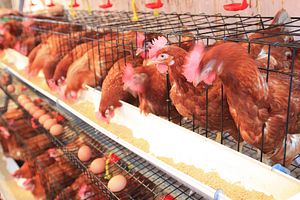SARS, H5N1, and H7N9. Over the past 10 years, China has earned its reputation as the epicenter of major disease outbreaks. Now, while the country is still concerned about the return of H7N9, another virus has emerged. On Wednesday a 73-year-old woman from the landlocked southeastern Jiangxi Province, who died of respiratory failure on December 6, was confirmed by the China CDC to be infected with the H10N8 avian flu.
The death is unusual in that it is the first confirmed case of human infection of H10N8 in the world. According to the World Health Organization (WHO), since 1965, the H10N8 virus has been detected (in birds) in at least six countries: Italy, USA, Canada, South Korea, Sweden, and Japan. It was first isolated from wild birds in central China in 2007 by a group of Chinese scientists, who found that the isolate was low-pathogenic for chickens, but when adapted to mice, could rapidly increase its virulence.
The same virus was isolated in January 2012 – this time from a live bird market in Guangdong Province. Now with the reported human case in Jiangxi, the virus has apparently broken the species barriers and evolved into a new strain capable of adapting to human beings and causing death. Since the index case had poultry exposure, Hong Kong health authorities have warned people not to visit mainland wet markets or come into contact with live poultry, while Taiwan has advised people traveling to Jiangxi to take health precautions and refrain from being exposed to fowl.
The good news is that this is still a single case, and none of the victim’s family members have shown symptoms after being in contact with her, suggesting the risk of human-to-human transmission is low. China CDC has also noted that there is no direct connection between the virus and H7N9, which has infected more than 140 people in China, including 5 in Jiangxi.
While the isolation and reporting of the virus might suggest that China has strengthened its overall surveillance and response capacities (especially since SARS), it is doubtful that the reporting of the single case points to a well-functioning surveillance system in Jiangxi, a province that ranks in the lowest quartile of all Chinese provincial units. This is especially true given the sustained central-local gap in laboratory and epidemiological capacities in China. Also, it is still unknown whether the index case presages the coming of another H7N9-type outbreak. According to Chen Ze, who first isolated the virus in China and, in April, warned of the threat from H10N8, there could be more human cases in the future. This should not deter travel, but people are now advised to avoid wet markets (in addition to poor air and unsafe food) in China.
Yanzhong Huang is Senior Fellow for Global Health at the Council on Foreign Relations. This piece was previously published on CFR.org’s Asia Unbound blog.

































